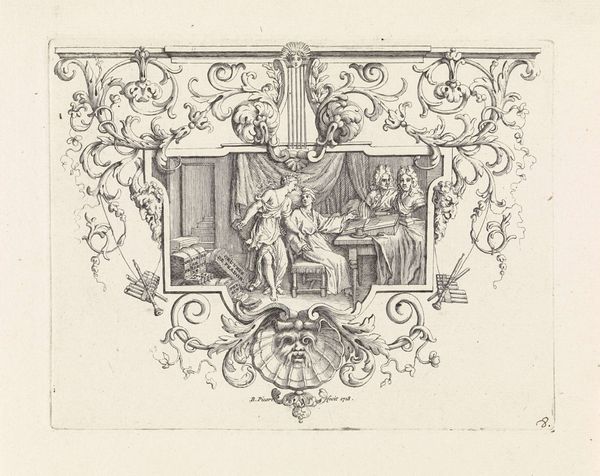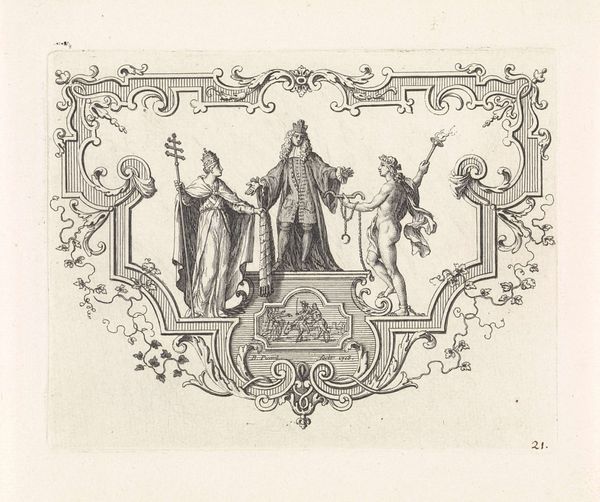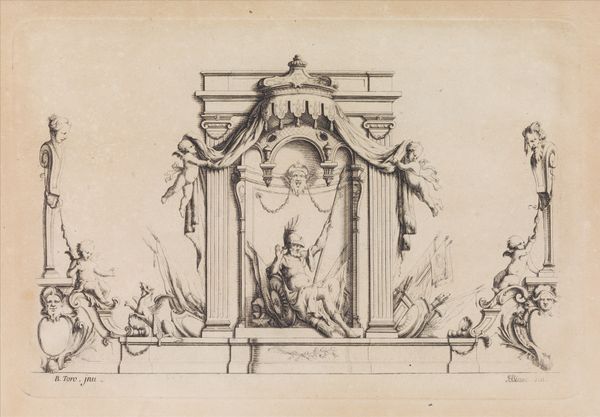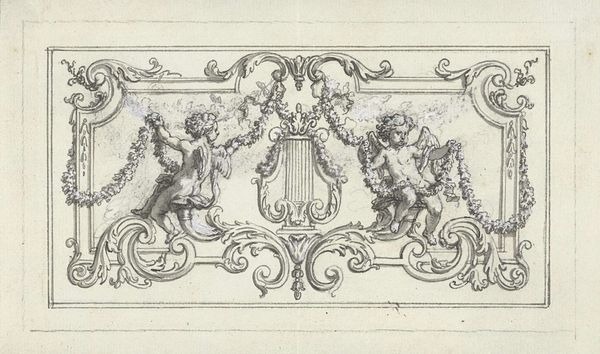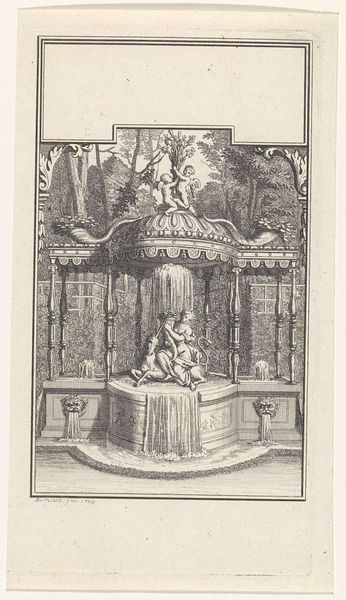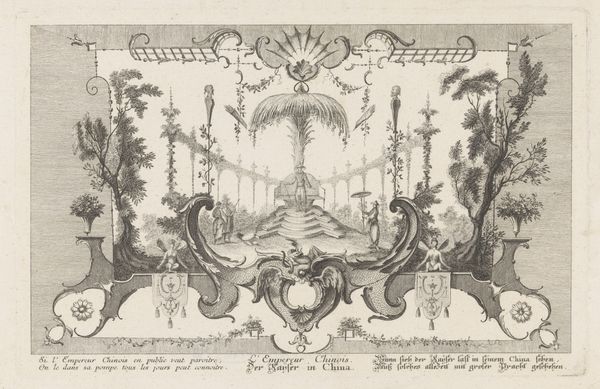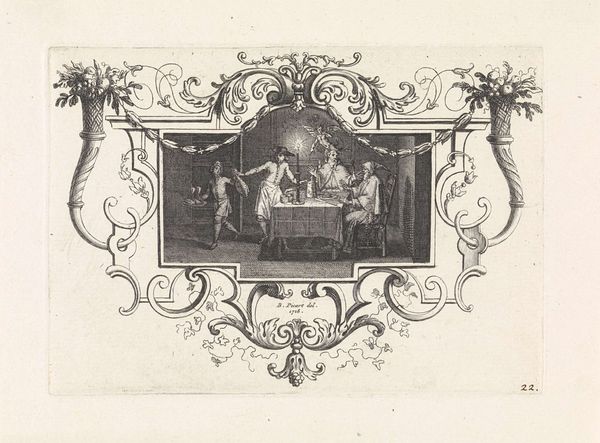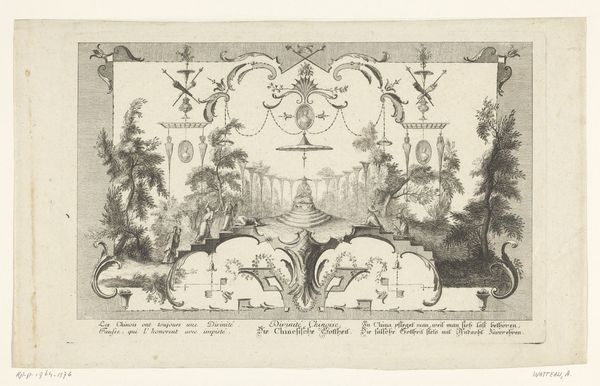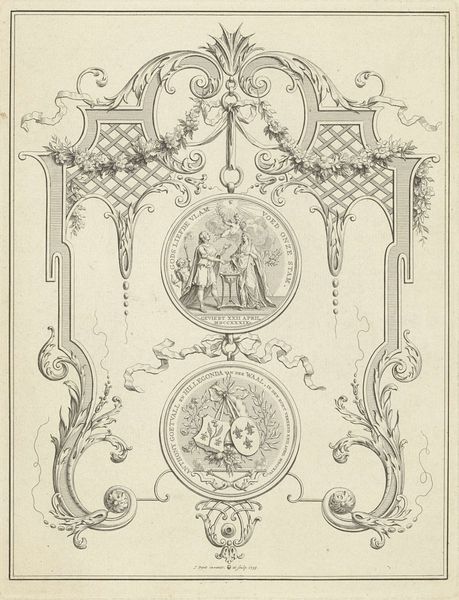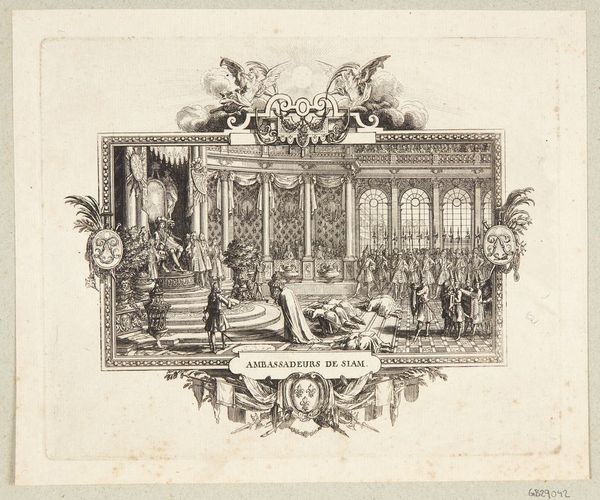
drawing, ink, engraving
#
drawing
#
allegory
#
baroque
#
pen drawing
#
old engraving style
#
figuration
#
ink line art
#
ink
#
line
#
engraving
Dimensions: height 81 mm, width 145 mm
Copyright: Rijks Museum: Open Domain
Editor: This is "Paneelvulling met offerende putti," or "Panel Filling with Offering Putti," a pen and ink drawing from 1725 by Bernard Picart, housed here at the Rijksmuseum. It's giving me very ornate, theatrical vibes... almost like a stage set. What's your take? Curator: It's interesting you see it as theatrical. I look at this engraving and I immediately consider the historical context. Think about the role of allegory in the 18th century, the way these visual tropes – here, putti engaging in what seems to be an act of sacrifice – were used to convey very specific moral and political messages. What sort of messages do you think Picart, through the composition and subject matter, might have wanted to communicate? Editor: Hmmm, I'm not sure. I mean, it looks like some kind of ritual, with the putti offering something at an altar. Is it about religion? Curator: Perhaps on the surface. But consider the use of classical imagery during this period. Think about power structures. Who was commissioning works like this? Who was the intended audience? Often, these seemingly innocent allegories were laden with veiled references to the aristocracy, to political ideologies, and even social critiques. How do you read the symbolism in the figures' placement, their gestures? Editor: Okay, so it could be more subversive than it appears? Like a commentary on power disguised as classical art? The asymmetry is interesting; all the figures on the left going up steps, and on the right going down. Curator: Exactly! Picart gives us a potential critique on societal roles through seemingly innocuous putti engaging in an act of sacrifice. The descent suggests an abdication, and we might ask if this artist offers any alternatives through those being symbolically raised. Perhaps it asks its elite audience to think about the costs and nature of their roles in this life and society. Editor: That's fascinating. I'll definitely see this piece in a different light now, considering those potential layers of political meaning. Curator: It demonstrates how crucial it is to view artworks as reflections of their time, to unpack the complex dialogue between art, power, and society. It is more than a drawing; it is a statement on 18th century hierarchies.
Comments
No comments
Be the first to comment and join the conversation on the ultimate creative platform.
